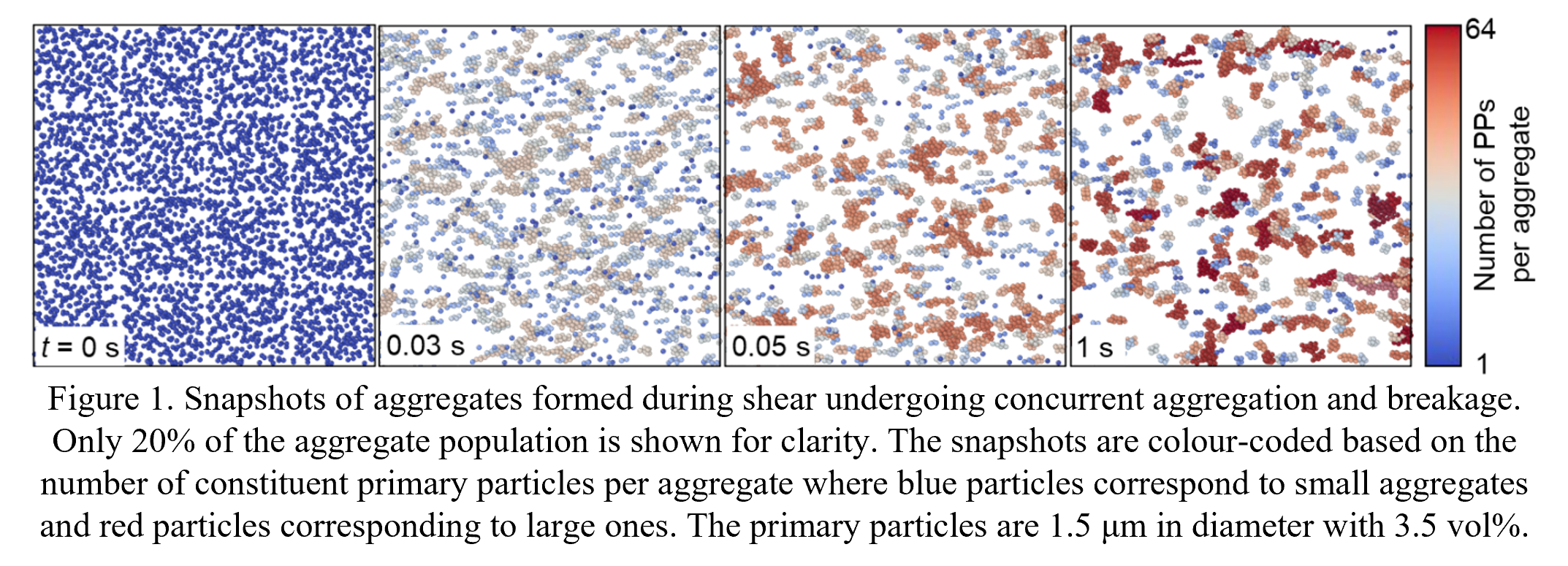Breadcrumb
- Home
- Publications
- Proceedings
- 2023 AIChE Annual Meeting
- Particle Technology Forum
- Particle Breakage
- (74d) Breakage of Alumina Aggregates Under Shear By CFD-DEM Simulations

Here, Computational Fluid Dynamics (CFD) are coupled with Discrete Element Method (DEM) to investigate the effect of shear on alumina aggregation accounting for particle-particle (surface, contact and collision forces) and particle-fluid interactions (hydrodynamic forces). The evolving aggregate size, size distribution, and aggregate structure are quantified during concurrent aggregation and breakage induced by shear (at shear rates, G, of 300 â 3000 s-1) in a Couette flow cell from perfect spherical particles all the way up to large aggregates, finding excellent agreement with experiments1. Snapshots of the aggregates formed by shear-induced aggregation undergoing simultaneous breakage are shown exemplarily for G = 1000 s-1 in Figure 1. Initially, spherical primary particles (blue spheres) collide with each other forming larger aggregates (e.g., white particles at 0.03 and 0.05 s). The particles grow further with time (red particles at 1 s) and, once steady state has been reached, the aggregation and breakage rate are both dominant resulting in internal aggregate restructuring without further particle growth. Aggregate breakage is quantified during steady state and a new equation is proposed for the breakage rate as a function of the shear rate and the aggregate size for the first time at low shear rates. Such easy-to-use breakage rate equations obtained from accurate CFD-DEM simulations can be readily used in population balance models.